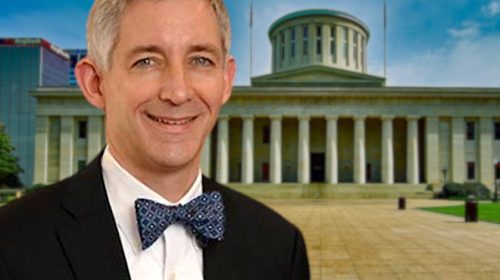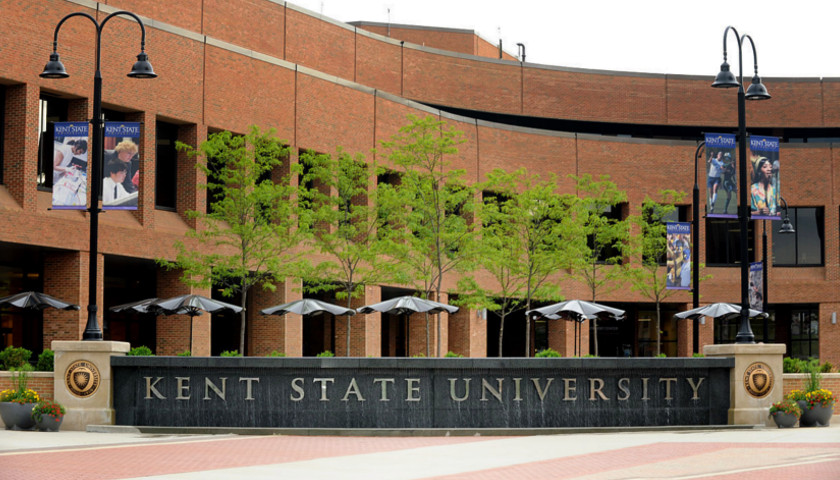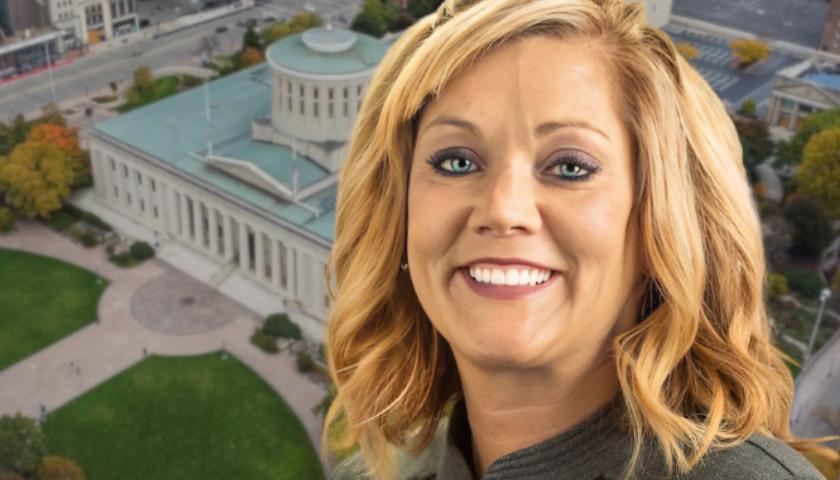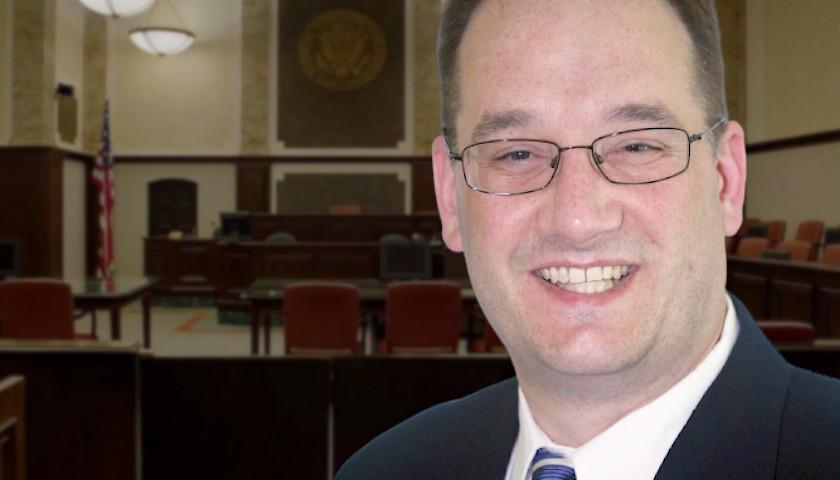COLUMBUS, Ohio – Governor Mike DeWine announced Monday that Ohio Department of Health (ODH) Director Stephanie McCloud would release a consolidated order to simplify state-imposed COVID restrictions.
The “order does consolidate several orders and transfers important items we want to focus on into one order,” said McCloud. The crux of the order will be “the mask, staying in smaller groups, distancing from others, sanitizing.” The ODH director said her agency will encourage establishments to use one-way entrances and exits and conduct events outdoors when possible.
“The hope in encompassing separate orders into one order,” said McCloud, is that it will be easier for event organizers and attendees to understand expectations when attending events – proms, graduations and festivals can happen with the new order.
DeWine said, “We can do about anything, it’s how we do it.”
Rescinded orders
After the press briefing, DeWine’s communications team released the consolidated order. In addition to condensing restrictions, Director McCloud also issued an order to rescind previous orders. The rescinded orders pertain to:
-
- The requirement to inventory all ventilators
- Guidance on reopening campgrounds
- Sports – contact and non-contact, including bowling alleys
- Gyms, dance studios, personal fitness venues
- Business guidance and social distancing
- Non-essential surgeries and procedures
- Youth and residential camps
- Facial coverings
- Entertainment venues
- Restaurants, bars, banquet and catering facilities
- Youth, collegiate, amateur, club and professional sports
- Limits and prohibitions on mass gatherings
- Fairs and animal exhibits
New order
The condensed order requires face coverings at all times while indoors (except homes) and outdoors when within six feet of others, congregating in groups of 10 or less, maintaining six feet of distance from others, washing hands with soap and water for 20 seconds, using hand sanitizer, covering coughs and sneezes, regularly cleaning high-touch surfaces and not shaking hands.
Indoor events still have an attendance restriction consisting of 25 percent of the fixed-seating capacity and require pods of people to maintain a maximum number of 10, while remaining six feet apart.
Buildings are to provide maximum ventilation per the new order and attain MERV13 filtration as soon as possible. Events involving food and drinks require attendees to sit while eating and drinking, while maintaining six feet of separation.
Businesses are required to post signage stating that masks are required.
Individuals who are confirmed COVID-positive are to immediately isolate, seek medical care when symptomatic and are recommended to work with the local health department to identify individuals infected or exposed in order to facilitate contact tracing.
Students who are exposed to COVID in the classroom are not required to quarantine but student athletes who are exposed outside the classroom are required to quarantine for 10 days without testing and seven days with a negative test, if asymptomatic.
A reporter asked DeWine whether the consolidated order was a move to force the hand of the General Assembly – instead of removing one order or rule, they’d now be forced to revoke multiple. Last month the Ohio General Assembly passed a law that provides oversight to statewide officials and agencies making public health emergency rules and orders.
DeWine said it has “nothing to do with the General Assembly,” but that it’s guidance to get back to the basics – “we all have to get back to the basics.”
The Governor continued to tout the efficacy of masks during the presser in spite of seemingly conflicting comments – at one point expressing concern over rising cases but at the same time lauding Ohioans for being “93 percent to 94 percent” compliant with masks. Ohio’s largest runup in cases, hospitalizations and deaths occurred in the fall despite a mask mandate being put into effect in July and mask compliance being well above 90% according to the Ohio Investigative Unit.
The Star asked both the Governor’s office and the ODH about how the claims of masking efficacy were substantiated given these facts both declined comment. Ohio attorney Maurice Thompson wrote that Ohio has yet to provide evidence of the effectiveness of their policies under oath during cases brought against Ohio by Ohioans contesting COVID restrictions.
“Common sense” is seemingly the rational for continued government mandates – and it’s a phrase that McCloud and DeWine used throughout the Monday briefing when urging Ohioans to continue masking and distancing.

Ohio Department of Health Chief Medical Officer Dr. Bruce Vanderhoff said Ohio is “still very much in the thick of things” with COVID – citing rising cases, a positivity rate over four percent and the B.1.1.7. COVID variant that he called “not only much more contagious but much more deadly.”
DeWine did not say whether the increased positive tests are a result of state colleges like Ohio State University and Kent State University requiring students to test (Ohio State now requiring twice-weekly testing). Ohio State is offering prizes to branch campus students who test (and urging them to test repeatedly).
The Star sent an email to an ODH spokesperson and asked what information Dr. Vanderhoff relied on to state that the variant was more contagious and more deadly. An ODH spokesperson, again, declined comment.
DeWine said during the briefing that Ohio will urge all college students who want a jab to get vaccinated during the month of April. He and the First Lady visited the Ohio State University Schottenstein mass vaccination site on Monday and DeWine recounted during his talk comments that students made to him about why they were getting vaccinated – to get back to normal life, to have a normal college experience, to prepare for summer work and to see family members.
When questioned about Ohioans who have already received the vaccine who test positive – Vanderhoff said this is occurring and that it is likely the result of an asymptomatic person who didn’t know they were infected before the shot. Vanderhoff said these situations may bolster the body’s immunity response. However, neither he nor DeWine clarified whether those positive tests were being separated and from non-vaccinated positives.
Pfizer is the only vaccine that has Emergency Use Authorization (not FDA approval – rather a temporary authorization) for 16- and 17-year-olds. DeWine said he would urge students in that age range to get vaccinated before the end of the school year and that Ohio will work with schools to bring the vaccines to the schools. The Governor called high school students “super spreaders.”
According to Dr. Vanderhoff, over 3.7MM Ohioans have received a vaccine and DeWine calls it a “race” to get people vaccinated and to stave-off the spread of the COVID variants.
DeWine announced that the next presser will be held on Thursday.
The full Monday briefing can be viewed below.
– – –
Jack Windsor is the Statehouse Reporter at The Ohio Star. Windsor is also an independent investigative reporter. Follow Jack on Twitter. Email tips to [email protected].





